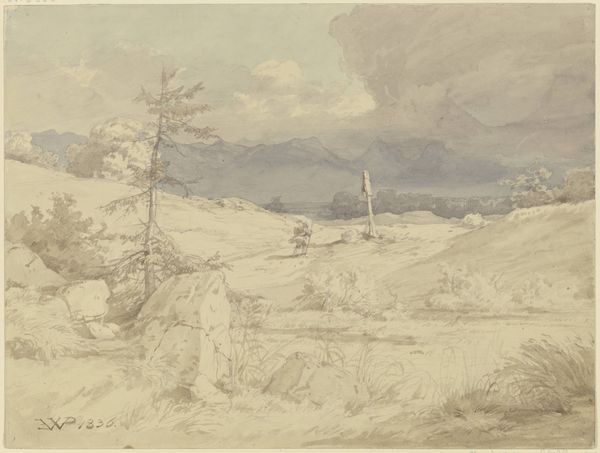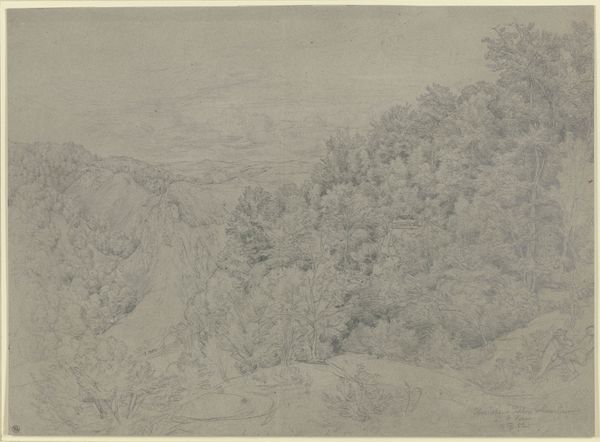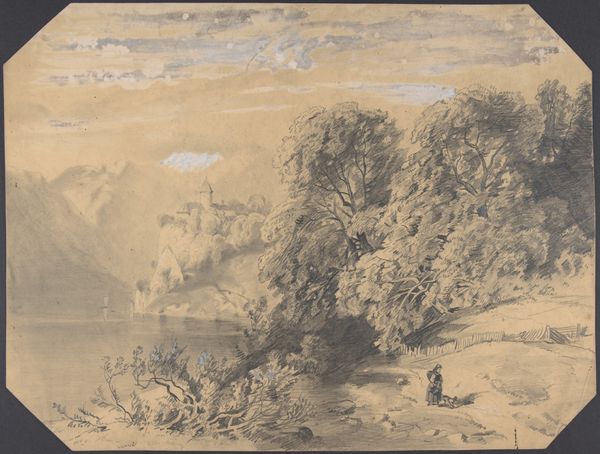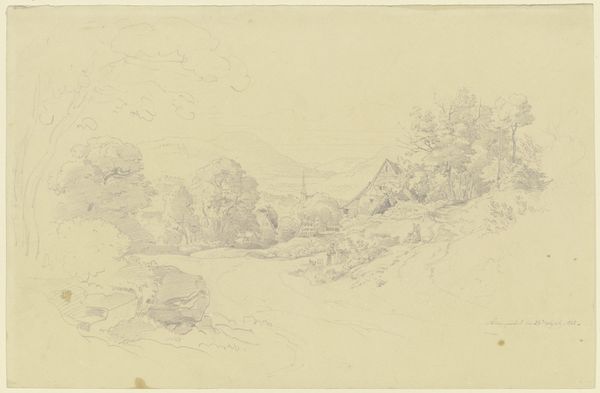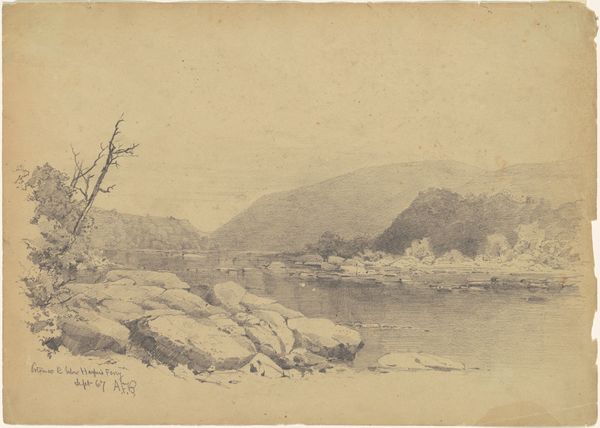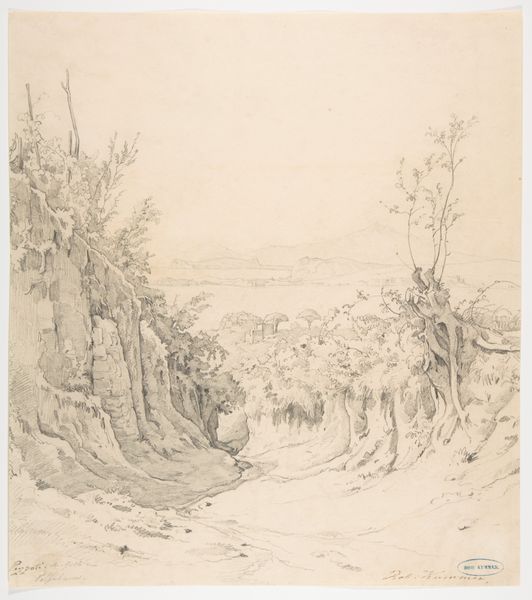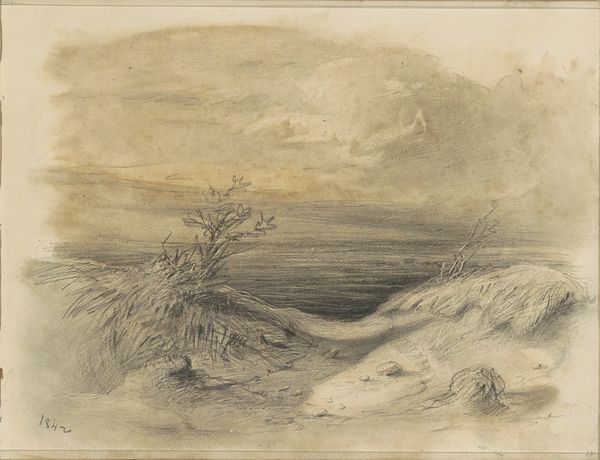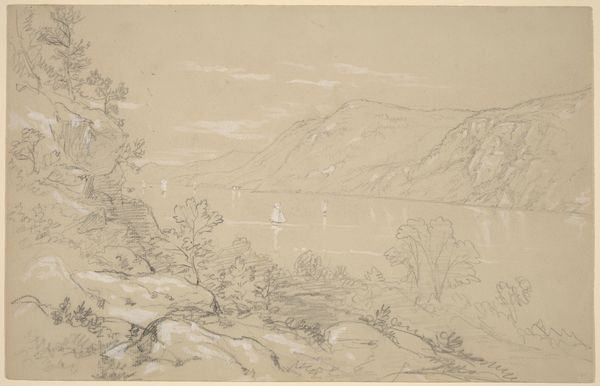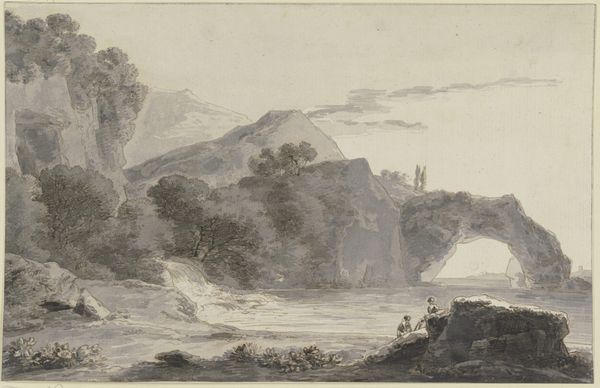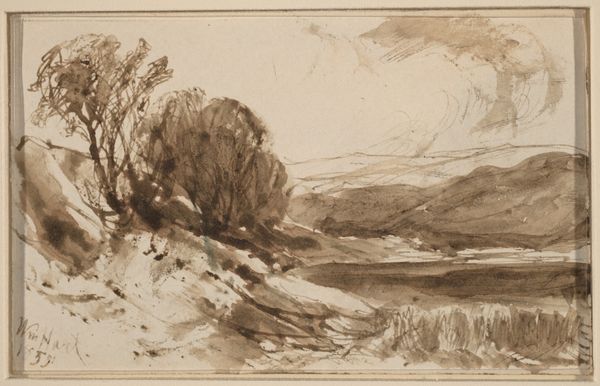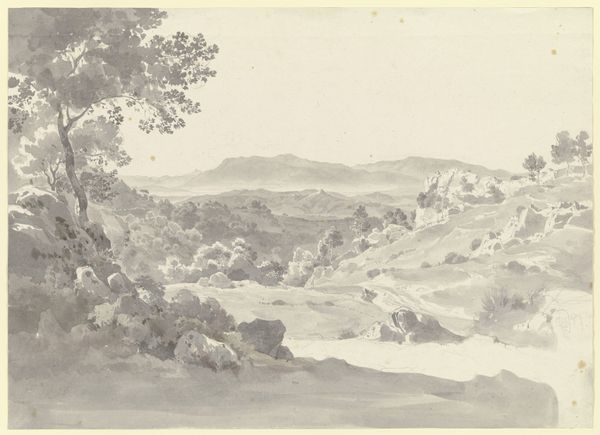
drawing, watercolor
#
drawing
#
16_19th-century
#
landscape
#
watercolor
#
german
#
romanticism
#
watercolor
Copyright: Public Domain
Curator: Eduard Wilhelm Pose’s “Italian Landscape,” a watercolor drawing residing here at the Städel Museum, immediately strikes me as dreamlike, a vision veiled in sepia tones. Editor: Absolutely. It's an ode to nostalgia, wouldn't you agree? The way the hazy washes blend together, almost erasing the details, feels like recalling a memory from a great distance. The overall composition projects romantic longing, wouldn't you say? Curator: I see your point. Indeed, the interplay of light and shadow, created through masterful manipulation of the watercolor medium, certainly evoke a mood of longing and perhaps, even the sublime. Look how the composition leads the viewer's gaze from the rocky foreground to the distant mountains and the vague architectural outlines sitting next to a body of water. Notice the subtle brushwork that differentiates the foliage. Editor: Subtlety is its strength, and the muted palette emphasizes the serenity. Yet, beneath the tranquil surface, the structural composition—the jagged rocks juxtaposed with the distant, orderly town—suggests a dialogue between untamed nature and human civilization. Almost a kind of reverie of Romanticisim. Curator: A binary opposition, as it were. Precisely, Pose’s Romantic sensibilities clearly resonate with the artistic ideals of his era. The calculated arrangement of elements and restricted tonal range serve not only to capture a picturesque scene but also to imbue it with symbolic weight. I see, reflected through nature itself, society emerging. Editor: It reminds me of Turner's watercolors, the way he captures light, and atmosphere. But there's also something uniquely German about the way Pose imbues this with emotion. Curator: I concede the stylistic resemblance. Now, let's not overlook how the work speaks to a broader cultural phenomenon: the 19th-century artist's pilgrimage to Italy in search of beauty and inspiration, with particular attention paid to the arrangement of line, shape, form and color, a sophisticated interpretation of Italian essence. Editor: Ultimately, it is more than a visual document, wouldn't you agree? More a visual poem or dream, filtered through a deeply personal lens. Curator: A fitting synthesis, truly.
Comments
No comments
Be the first to comment and join the conversation on the ultimate creative platform.
